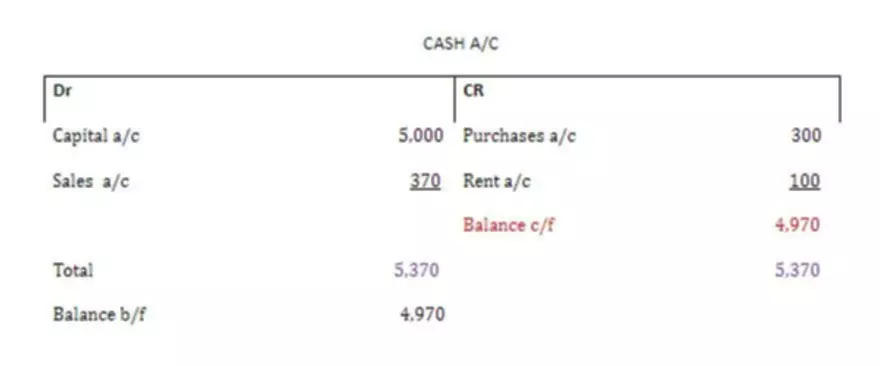Content

Your total profit or loss is what you’ve earned minus what you’ve spent. Payroll ($52,000) plus insurance ($11,000), advertising ($7,000), taxes ($2,000), and interest ($1,000) equals total expenses of $73,000.

It shows the company’s net income over a period of time, which can be monthly, quarterly, or yearly. It’s up to you, as the business owner, to determine how often you want to create a P&L. Choose a frequency that will help https://www.bookstime.com/ you see the overall picture of how the business is doing and how it can improve. It’s also a good idea to compare present P&Ls to prior years’ P&Ls to see if the company’s net income is increasing or decreasing over time.
P&L
Expenses are matched in the same period as the corresponding revenue they helped create, which is called the matching principle. This includes the current portion of long-term debtand bank indebtedness. Also known as accounts receivable, this represents money owed to the company by customers. This category includes equity and debt securities for which there is a liquid market. These are the most liquid assets, which may include Treasury bills (T-bills), short-term certificates of deposit and cash. Accounting is the process of recording, summarizing, and reporting financial transactions to oversight agencies, regulators, and the IRS. You can find many templates to create a personal or business P&L statement online for free.
Square-Stepping Exercise Linked With Improved Executive Functioning in Parkinson Disease – AJMC.com Managed Markets Network
Square-Stepping Exercise Linked With Improved Executive Functioning in Parkinson Disease.
Posted: Wed, 28 Sep 2022 14:10:21 GMT [source]
The Sensitivities Method involves first calculating option sensitivities known as the Greeks because of the common practice of representing the sensitivities using Greek letters. For example, the delta of an option is the value an option changes due to a $1 move in the underlying commodity or equity/stock. A well-written statement of work can avoid ambiguity between a client and vendor.
Drive Business Performance With Datarails
Information and views provided are general in nature and are not legal, tax, or investment advice. Information and suggestions regarding business risk management and safeguards do not necessarily represent Wells Fargo’s business practices or experience. Please contact your own legal, tax, or financial advisors regarding your specific business needs before taking any action based upon this information.
- Because it is created in the image of the P&L statement, the budget can be used to generate target metrics.
- The balance sheet shows assets, liabilities, and owner’s equity.
- The main difference between a forecast and a budget can be equated to the difference between a map and a compass.
- It summarizes the revenue costs and expenses incurred over a specific, fixed period of time.
- Accounts receivable represents money owed to a company for goods or services it has already delivered.
- Securities and Exchange Commission so that they can be scrutinized by investors, analysts, and regulators.
Typically, a business makes a P&L statement quarterly or annually — but they also can be done more frequently. P&L statements are important, because many companies are required by law or association membership to complete them. A P&L statement also helps a company’s management team to understand the business’s net income, which may be helpful in decision-making processes. For example, a business owner may consider whether his or her company is bringing in enough of a profit to justify renovating their building or expanding in other ways. Primarily used by service-based industries and small businesses, the single-step method determines net income by subtracting expenses and losses from revenue and gains. It uses a single subtotal for all revenue line items and single subtotal for all expense items. For instance, in the context of an acquisition where the acquirer follows accrual accounting, adjustments to a target company’s financial statements would be necessary if it follows cash accounting.
Profit and Loss Statement Video Explanation
A balance sheet considers a specific point in time, while a P&L statement is concerned with a set period of time. Cash flow from investing activities reports the total change in a company’s cash position from investment gains/losses and fixed asset investments. Revenues and expenses for nonprofit organizations are generally tracked in a financial report called the statement of activities. As such, what is p&l this report is sometimes called a statement of financial activities or a statement of support. BelugaWhale July 22, 2010 @win199 – I hated getting the P&L reports where I worked every quarter – they never told me anything! No one ever showed me how to read them and so I just kept on doing my thing. Of course, I understood when we didn’t make the daily sales goal, but that was kind of a given.
For individuals with large amounts of money invested in the company, they are a vital tool. You can use the income statement to calculate several metrics, including the gross profit margin, the operating profit margin, the net profit margin, and the operating ratio.
Part of ensuring you have a successful, accurate accounting system is knowing which documents you need to keep tabs on. Financial records must be tracked, created, stored, and referenced correctly for a business to function successfully.

Operating income is calculated by subtracting operating expenses from gross profit. Another reason to generate a profit and loss report is because it’s required by the IRS to assess taxes on the business profits. In particular, the P&L statement shows the operating performance of the company as well as the costs and expenses that impact its profit margins. Together, alongside the cash flow statement and balance sheet, the P&L statement provides a detailed depiction of the financial state of a company. For this reason the numbers reported in each document are scrutinized by investors and the company’s executives. While the presentation of these statements varies slightly from industry to industry, large discrepancies between the annual treatment of either document are often considered a red flag.

Keine Kommentare vorhanden